The development history of Vietnam as well as the past 40 years of Renovation shows that whenever the whole nation has a unified development mindset, a unified belief to act with determination, no matter how difficult the task is, no matter how big the risk, we will find a way.
At this time, the era of a prosperous, dynamic, and increasingly far-reaching Vietnam is converging. These are the four major resolutions of the Politburo that together create a unified whole of strategic thinking and action for the country's development in the new era, along with the viewpoints, goals, targets, and breakthrough, strong action solutions... stated in the Draft Political Report of the 13th Party Central Committee at the 14th National Congress of the Party. All to realize the burning desire: to write a Vietnamese miracle.
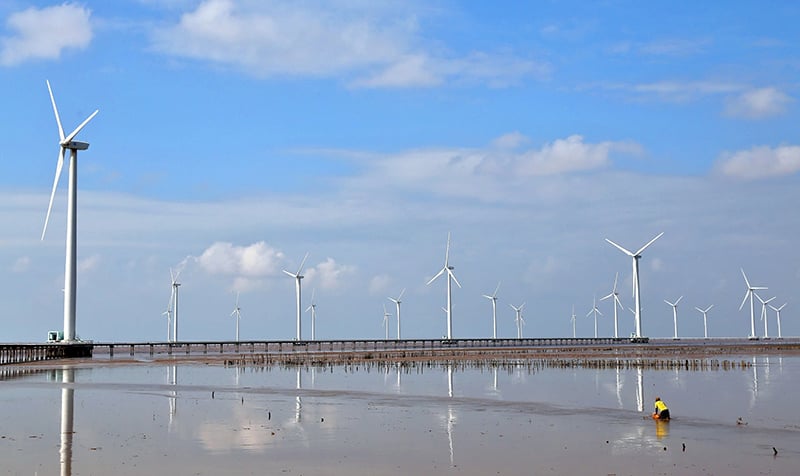 |
| When energy is one step ahead, Vietnam will be brighter, greener and more stable on its development journey. |
Lesson 5: Foundation for Vietnam's sustainable development
For the economy to develop rapidly, sustainably and stably, the energy system must not only be continuous and safe, but also fair and transparent. Never before has the need for investment and construction of energy infrastructure to meet the requirements of breakthrough socio-economic development been as urgent as it is now.
Electricity must go a few steps ahead
Mr. Bui Van Thinh, Chairman of Binh Thuan Renewable Energy Association, cannot forget the summer of 2023, when the entire North entered the peak of the hot season, electricity was cut off in rotation, and a series of factories had to reduce capacity.
“We are calling for investment in high technology, what if there is a shortage of electricity?”, Mr. Thinh asked when asked to comment on the issue of high economic growth. The problem is not just a shortage, because the demand for electricity supply in the future is not only sufficient, but also needs to be “high quality” and “clean”.
With 30 years of experience in the electricity industry, Mr. Tran Anh Thai, Deputy General Director of ATS Company, is very familiar with this reality. In every economy, electricity is always identified as one of the key infrastructures, with the principle that "energy must be one step ahead". "Even with electricity alone, it must be several steps ahead", Mr. Thai said.
That is why Resolution No. 70-NQ/TW of the Politburo on ensuring national energy security until 2030, with a vision to 2045, has excited the energy community, especially the electricity sector.
The resolution clearly points out the shortcomings of the current electricity system and proposes a series of key solutions, such as perfecting institutions, applying market prices, ending cross-subsidy; strongly encouraging the participation of the private sector, considering this an "important driving force"; prioritizing renewable energy, new energy, developing gas-fired electricity, gradually bringing back nuclear power...
“Resolution 70-NQ/TW together with Resolution 68-NQ/TW will create a breakthrough for electricity. With the industry’s investment capital demand of about 150 billion USD from now until 2030, without the participation of domestic and foreign private sector, it will be very difficult to mobilize,” Mr. Thinh believes.
In 2024, the total electricity production and import output of the entire system will reach 308.73 billion kWh. Currently, the total power capacity (including rooftop solar power) of Vietnam is about 90,000 MW, ranking 2nd in Southeast Asia and 23rd in the world.
The target set by the adjusted Power Plan VIII and Resolution 70-NQ/TW for 2030 is to have a total primary energy supply of about 150 - 170 million tons of oil equivalent; total capacity of power sources of about 183,000 - 236,000 MW and total electricity output of about 560 - 624 billion kWh.
Need competitive market
Doubling the total power output and installed capacity of the system in the next 5 years, equivalent to adding about 20,000 MW of new power sources each year, is extremely difficult. Therefore, the participation of the private sector is highly anticipated.
However, a series of projects using imported liquefied natural gas (LNG) and domestic gas with stable operation time throughout the year and capital demand of billions of USD are facing difficulties in negotiating Power Purchase Agreements (PPA), Gas Purchase Agreements (GSA), and capital arrangement.
On October 14, 2025, foreign investors in five LNG and domestic gas-fired power projects jointly signed a proposal for the Draft Resolution of the National Assembly on mechanisms and policies to remove difficulties in national energy development in the 2026-2030 period, which is being publicly consulted.
 The road ahead still has many challenges to overcome, but we have firm faith in the strength of national unity...
The road ahead still has many challenges to overcome, but we have firm faith in the strength of national unity... 
The highlight of this suggestion is the proposal to “apply a mechanism for long-term minimum contract power output (Qc) not lower than 90% of the average power output for many years and extending the duration of the PPA”. Current regulations are “Qc not exceeding 65%” and the duration is 10 years.
Along with that, there are some proposals such as fuel offtake obligations and fuel supply risks will be transferred horizontally to the PPA and borne by Vietnam Electricity Group (EVN). If the National Electricity System and Market Operator (NSMO) fails to mobilize enough electricity output according to the offtake as signed by the PPA, then EVN or NSMO must compensate...
Although the investors' proposal is legitimate, it should be reiterated that the maximum price range for negotiating the purchase of LNG-powered electricity is 3,327.42 VND/kWh, and for domestic electricity is 3,069.38 VND/kWh for 2024. Thus, with the currently approved average retail electricity price of 2,204.0655 VND/kWh, there is a gap of up to 1,000 VND/kWh between the selling price and the purchase price of electricity from this clean and stable source. If EVN is still in charge of electricity distribution, the difference will be borne by EVN - a state-owned enterprise. However, if private enterprises take on this role, there will be additional problems to solve.
Let's take a closer look at the current electricity market. After 13 years, since 2012, when the electricity market began operating, the number of participating plants has increased more than 3 times, but the direct capacity in the market has only reached about 37.9%. The reason, according to NSMO, is that although there are many additional large sources added to the system, such as BOT power plants, imported electricity, renewable energy sold at fixed FIT prices, these sources do not directly compete in the electricity market, and are being protected through PPAs with output underwriting or applying fixed FIT prices issued by the Government... In this context, the market price data collected does not accurately reflect the marginal cost of the system. As a result, it complicates the problem of optimizing electricity mobilization to meet the needs of the system.
Therefore, when Resolution 70-NQ/TW requires "developing the electricity market in the direction of increasing competitiveness, transparency, efficiency, and synchronization with ensuring energy security; effectively implementing the direct electricity trading mechanism, while enhancing the right to choose for electricity customers", experts in the industry have called this a new driving force for the electricity industry in particular and energy in general to operate effectively and transparently.
Thus, the first principle is to correctly and fully calculate transmission prices, distribution prices, investment responsibilities and obligations to ensure energy security. Social security tasks will be ordered, funded or recorded as budget debt by the State. The rest must operate according to market principles, with all economic sectors participating equally, without distinction between public and private.
In particular, in the context of climate change, fluctuating world fuel prices, and the trend of green energy transition, ensuring energy security requires new policy thinking. That is not only investing in more sources and transmission grids, but also better governance, transparency, efficiency and not putting pressure on electricity prices.
Historical turning point
The ambitious plans to “contribute to the economy with double-digit growth” of many businesses are having green energy projects, with a scale of tens of billions of USD. REE Group is proposing the Southern Offshore Wind Power Project, with an investment capital of about 35 billion USD. Vingroup has just started construction of the Hai Phong LNG Power Plant with a scale of up to 4,800 MW, with a total investment capital of about 5.5 billion USD... The wave of investment to anticipate the energy transition is taking place strongly.
It can be said that Resolution 70-NQ/TW has established a "historic turning point" in bringing electricity and energy back to the rules of the market, along with the strong regulatory role of the State - so that energy security is the fulcrum for national security and sustainable development.
It is also necessary to mention the tasks related to energy development set out in the Political Report of the 13th Party Central Committee at the 14th Party Congress in the new growth model. That is to improve the efficiency and competitiveness of the energy industry; prioritize development, gradually master production technology in renewable energy, new energy, gradually build and develop the nuclear energy application industry. This task is placed in parallel with the requirement to prioritize the acquisition, transfer, creative application, mastery of advanced technologies, strategic technologies, core technologies, source technologies, digital technologies, especially in the fields of electronics industry, semiconductor chips, artificial intelligence, nuclear technology, atomic energy, new energy, space technology, quantum technology. The goal is to master technology, affirm sovereignty in key areas where Vietnam has needs, potential and advantages.
When energy is one step ahead; the business community has a supportive institutional foundation to move forward in the space of innovation and creativity, Vietnam will not only liberate domestic resources, but will also be a stronghold for high-quality human resources and capital...
*
* *
The road ahead still has much to do, many challenges to overcome, but General Secretary To Lam affirmed: We have firm faith in the strength of the great national unity bloc, in the intelligence and mettle of the contingent of cadres and party members; in the aspirations of the young generation; in the cooperation of the business community; and in the creativity of the people.
In particular, the "four pillar resolutions" together with resolutions on energy, health, education and subsequent resolutions on the state economy, cultural revival... and especially the ideological light of the upcoming 14th National Party Congress are creating a unified development thinking system for Vietnam's future.
Hundreds of millions of Vietnamese people are walking together on the path to writing their own development miracles in the new era - the era of prosperity and happiness.
Source: https://baodautu.vn/ky-nguyen-moi-va-khat-vong-ky-tich-viet-nam---bai-5-nen-tang-cho-viet-nam-phat-trien-ben-vung-d425648.html







![[Photo] Closing of the 14th Conference of the 13th Party Central Committee](https://vphoto.vietnam.vn/thumb/1200x675/vietnam/resource/IMAGE/2025/11/06/1762404919012_a1-bnd-5975-5183-jpg.webp)











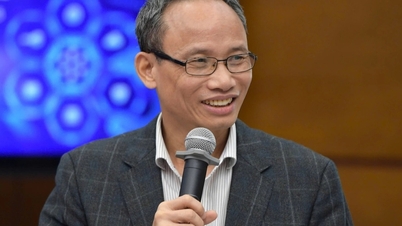



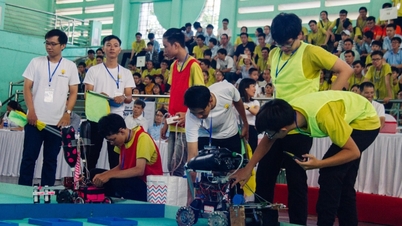












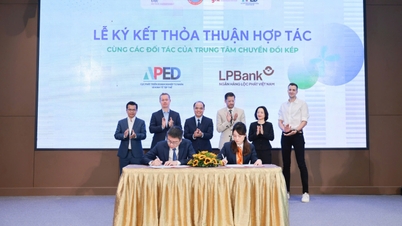















































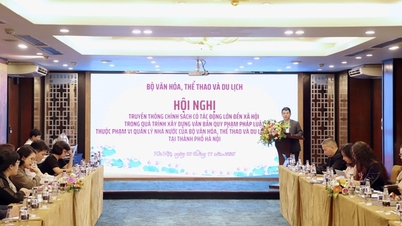
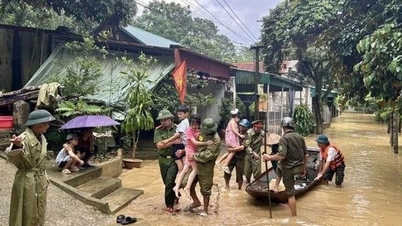

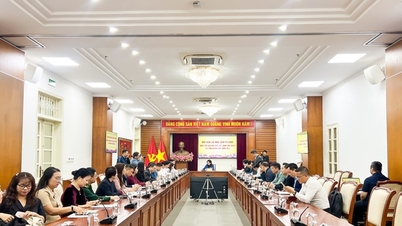


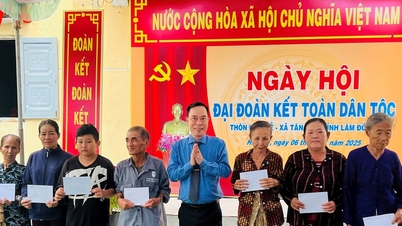

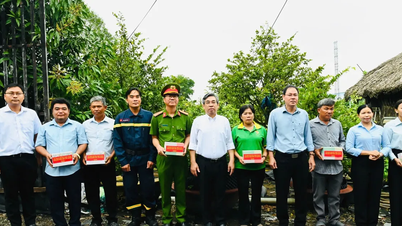












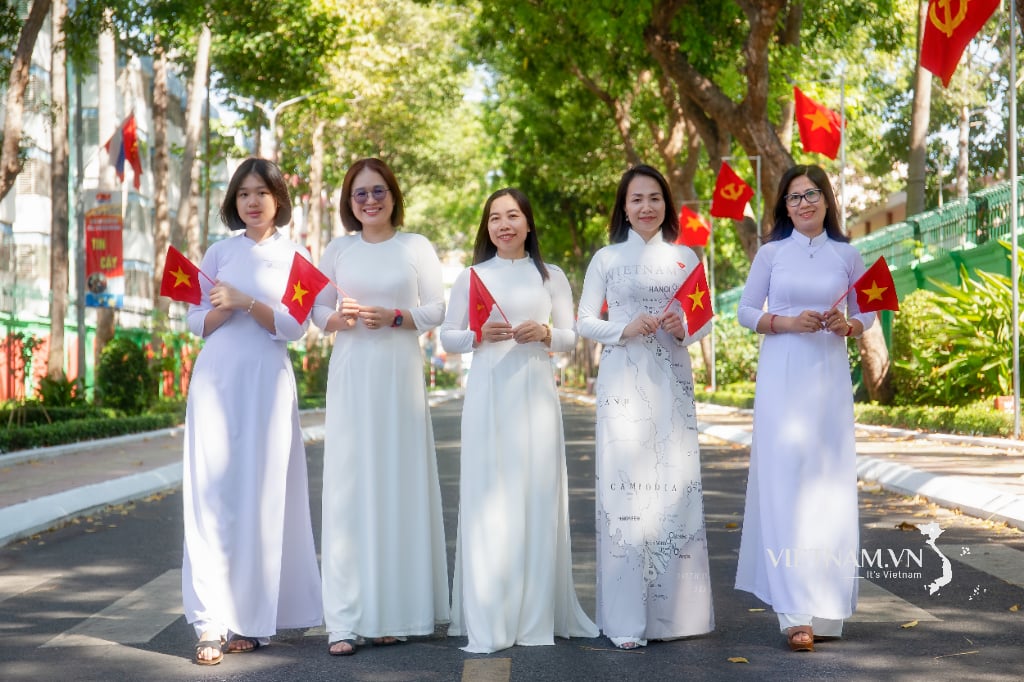



Comment (0)